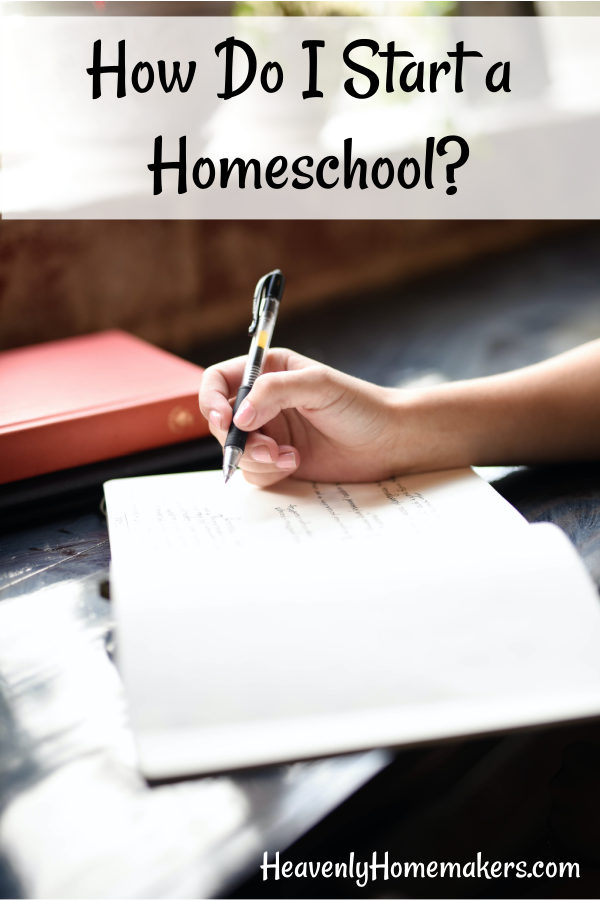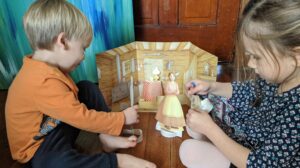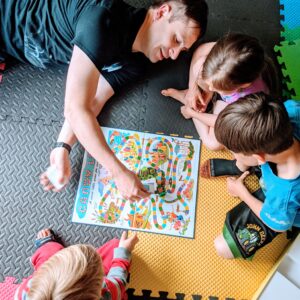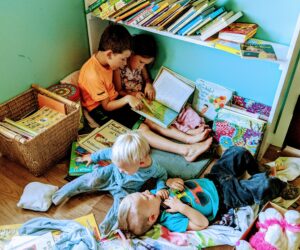
How Do I Start a Homeschool?
Share
So you think you can start a homeschool? Enjoy this article from Tasha!

How to Start a Homeschool
By Tasha Hackett
Going back to school looks different this year. In light of everything going on in the world, many are choosing to homeschool. You may be sick of hearing about it! What are schools going to do with the COVID situation? Do we homeschool because we want more protection in the school or because we want everything to go back to normal? Even parents who never wanted to homeschool their kids, ever, are looking into homeschool. If you’re a seasoned homeschooling family, go ahead and forward this article to someone needing encouragement.
Where Do I Begin for Homeschool?
So let’s say, hypothetically, that you wanted to homeschool your kids this year. You may be asking, “How do I even start? Where should I begin? What do I do first?”
There are amazing resources everywhere and I know it can be overwhelming. I’ll break down the essentials of homeschooling for you in a few simple steps.
Legal Steps to Take Before You Start a Homeschool
First, make sure you’re going about it legally. You are not allowed to simply buy a few books and tell your friends you’re homeschooling. Your kid will be just fine, but the government frowns upon that and you could get into trouble. (Most likely your local school will call you and find out what’s going on, and then they will tell you to do what you should have done and say, “Tisk Tisk.” But let’s avoid that.)
Go to hslda.org/legal (Home School Legal Defense Association) and find out what specific laws are required in your state. Some states require yearly testing, others just want a signature. For Nebraska, we signed a form, named our school, and filled out another form with our local school–including putting birth certificates on file. You can have fun with this and name it something creative and inspiring like, “Sunshine Unicorn Lollipop and Rainbows Happy Homeschool” or “Hackett Academy” or you can move right along and be amazingly simple: “Coppinger Homeschool.” This is not a game-changer and the government doesn’t care.
Promise me you will not freak out when the form asks you complicated questions and use fancy words like “the scope and sequence” of your curriculum (don’t make this answer complicated) and ask you to “provide instruction in language arts, mathematics, science, social studies, and health.” I’m telling you not to be threatened by this type of chatter.
What they want to know is simple: Are you going to teach your kids and take them outside and go for walks and let them know what’s going on in the world? Yes? Good. Next. Play around on the HSLDA website, there are lots of goodies there that are helpful for beginners. Just don’t get lost in the weeds.
So we’ve covered the legal aspect of homeschooling, now what?
Now the real Homeschool fun begins: Curriculum!
This is where every family has their own opinion and some will fight to the death for Saxon Math and A Beka Language Arts. We love the curriculum book packs from Beautiful Feet Books and Sonlight. But we also use a hodgepodge of other resources. For Preschool/Kindergarten, Learn Your Letters, Learn to Serve is a golden standard.
For peace of mind, you can purchase an all-inclusive curriculum pack from a huge variety of Homeschool publishers. This is a great option if you are nervous and want to make sure you have everything covered. But seasoned homeschoolers may tell you this is unnecessary.
Essentially: Pick something and run with it and then be flexible. You’re allowed to change your mind if you hate it. But you might love it.
Homeschooling a Kindergartener
Just have fun! This is the year they should learn to love learning and love school. This isn’t the time to bog them down with busy-work (unless they really love worksheets, and some children do.) I would not recommend an expensive math curriculum for Kindergarten or 1st grade. Kindergarten math means counting and shapes and patterns, learning the days of the week and months of the year. Kids do not have to learn how to read in Kindergarten unless they are inclined to.
Multiple studies have proven that accelerated learning in the early years (before seven) DOES NOT increase reading ability, grades, or advanced placement in the later years, and can in fact have the opposite result. (Read any of the homeschooling books by Dr. Raymond Moore for more information on this.)
Legal boxes checked and homeschool books picked out, now what?
You will have to decide what works best for your own homeschool. No one is an expert in your kids the way you are. My habit is to set aside time each morning for school, Laura does much of hers in the afternoon.
Protect your mornings (or whatever time you have set aside for school). Set aside certain hours for school work and protect that time. Don’t answer the phone, don’t play on social media. Turn off the TV. Don’t schedule dentist appointments or random park dates or lessons during your school hours, within reason. (Remember how we’re still being firm… but flexible?)
Make a plan and be consistent, but relax if things need to change. If mama is stressed, everybody is stressed. Protecting your mornings doesn’t mean you must be a rigid taskmaster.
A Sample Homeschool Schedule to Start With
Our homeschool day will look something like this but yours may be entirely different:
6:00 AM Mom awake and prepare for the day.
7:00 AM Kids wake up. (We have a rule they may not come out of their rooms until 7 AM)
7-8:00 AM Dad off to work. Breakfast for all. Daily chores and general clean up.
8-9:00 AM Morning Time (We start our homeschool day all together, with the baby on my lap and the others sitting on the couch with me. Memory work, poetry, singing, check calendar to what’s happening the rest of the week.)
9-11:00 AM Other book subjects. Language, Math, Reading, (Baby will have a morning quiet time in crib from 9-10, toddler will play. Small snack at 10.)
11 – 1:00 PM Free play for kids. Lunch. More play and chores if needed.
1-3:00 PM Quiet Time. (May play quietly alone. Read, write, draw, etc. This is life for a family with littles home together all day.)
3 – 5:00 PM Snack and then outside play.
5 – 7:00 PM Dinner and Chores.
7-8:00 PM Bedtime routine with Dad
8 – 10:00 PM Mom and Dad hang out.
You Can Start a Homeschool! You Got This!
When I first started, even though I was homeschooled as a kid, I felt lost trying to figure it all out as a parent. But really, you’ll be okay! Fill out the legal forms, choose a few basic books/curriculum, and arrange a generic daily schedule. Boom. Done.
You’re Not Alone
We have many resources available right here on this site. You’d be surprised how much support there is for homeschooling once you start looking! If you’re feeling lost and afraid, remember that there are thousands of others faced with making the same decision you are. Chin up!
Be sure to share this article for all your friends who are struggling with this same decision; a basic step-by-step plan is a great way to calm your nerves.
Subscribe for more homeschool, homemaking, and simple meals encouragement.
Blessings on your new homeschooling adventure!
 Tasha Hackett, friend of Laura, is a second generation homeschool mom x4 living in the heart of Nebraska. She spends her free time, (haha, she has no free time), reading and writing Christian Romance novels, and DIYing anything that needs done. She’s a huge promoter of being debt free. Laura is still here! Tasha is only a contributing author a few times a month. You can find Tasha @hackettacademy and on Laura’s IG account @heavenlyhomemaker.
Tasha Hackett, friend of Laura, is a second generation homeschool mom x4 living in the heart of Nebraska. She spends her free time, (haha, she has no free time), reading and writing Christian Romance novels, and DIYing anything that needs done. She’s a huge promoter of being debt free. Laura is still here! Tasha is only a contributing author a few times a month. You can find Tasha @hackettacademy and on Laura’s IG account @heavenlyhomemaker.
The post How Do I Start a Homeschool? appeared first on Heavenly Homemakers.



